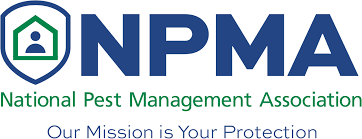Dealing with a bedbug infestation can be a frustrating and challenging experience. While there are various methods available for bedbug control, using heat has proven to be an effective and environmentally friendly approach. In this article, we will guide you through the process of safely using heat to kill bedbugs in your home, providing you with practical tips and precautions to ensure successful eradication.
Preparation:
Before implementing heat treatment, it is essential to prepare your home properly. Follow these steps:
- Declutter: Remove any unnecessary items, such as clothes, bedding, or furniture, from the infested area. This will help heat penetrate more effectively and ensure thorough treatment.
- Launder and dry: Wash infested bedding, clothing, and fabric items in hot water, followed by a high-temperature drying cycle. This will kill any bedbugs or eggs present on these items.
- Remove obstacles: Clear the area of any obstacles that could impede the distribution of heat, such as curtains, rugs, or furniture.
Temperature Monitoring:
Maintaining the appropriate temperature is crucial for effective bedbug eradication. Consider the following:
- Use professional equipment: Heat treatments are best carried out by professional pest control companies equipped with specialized heaters and temperature monitoring devices. They have the knowledge and experience to ensure safe and effective treatment.
- Monitor temperatures: Professionals will monitor the temperature throughout the treatment process to ensure it reaches lethal levels for bedbugs. This allows for adjustments, if needed, to guarantee comprehensive eradication.
Personal Safety:
When using heat to eliminate bedbugs, it is important to prioritize your safety and well-being:
- Leave it to the professionals: Heat treatments can be complex and require specialized equipment. It is advisable to seek the services of a professional pest control company experienced in heat treatments to ensure proper handling and safety.
- Protect yourself: If you attempt heat treatment on your own, wear appropriate protective gear, such as heat-resistant gloves and goggles, to minimize the risk of burns or injuries.
Post-Treatment Measures:
After heat treatment, take the following steps to prevent reinfestation and ensure a successful outcome:
- Seal cracks and crevices: Thoroughly inspect your home for cracks and crevices that may serve as hiding spots for bedbugs. Seal these openings to prevent future infestations.
- Regular monitoring: Continuously monitor your home for any signs of bedbug activity. Prompt action can help detect and address a new infestation before it becomes widespread.
- Seek professional advice: Consult with a professional pest control company for advice on preventive measures and additional steps you can take to safeguard your home against future bedbug infestations.
Conclusion:
Using heat to kill bedbugs in your home can be an effective and eco-friendly method for eradication. However, it is crucial to prioritize safety and follow proper procedures to ensure a successful outcome. While DIY heat treatments are possible, seeking the services of a professional pest control company experienced in heat treatments is highly recommended. They possess the expertise, equipment, and safety measures necessary to achieve optimal results. By combining heat treatment with proper preparation, temperature monitoring, personal safety precautions, and post-treatment measures, you can effectively eliminate bedbugs and restore peace and comfort to your home.
References:
- Doggett, S. L., Dwyer, D. E., Penas, P. F., & Russell, R. C. (2012). Bed bugs: Clinical relevance and control options. Clinical Microbiology Reviews, 25(1), 164-192.
- Potter, M. F., & Haynes, K. F. (2018). Bed bugs (Cimicidae). Urban Pest Management: An Environmental Perspective, 591-613.
- Rukke, B. A., & Aak, A. (2017). Control of bed bug infestations: Observations and control strategies in Norway. Insects, 8(1), 15.
- Wang, C., & Cooper, R. (2012). Bed bugs: Biology and control. Journal of Integrated Pest Management, 3(2), 1-7.
- Wang, C., Tsai, W. T., & Cooper, R. (2017). Bed bug (Hemiptera: Cimicidae) management in the United States. Journal of Economic Entomology, 110(2), 591-604.







